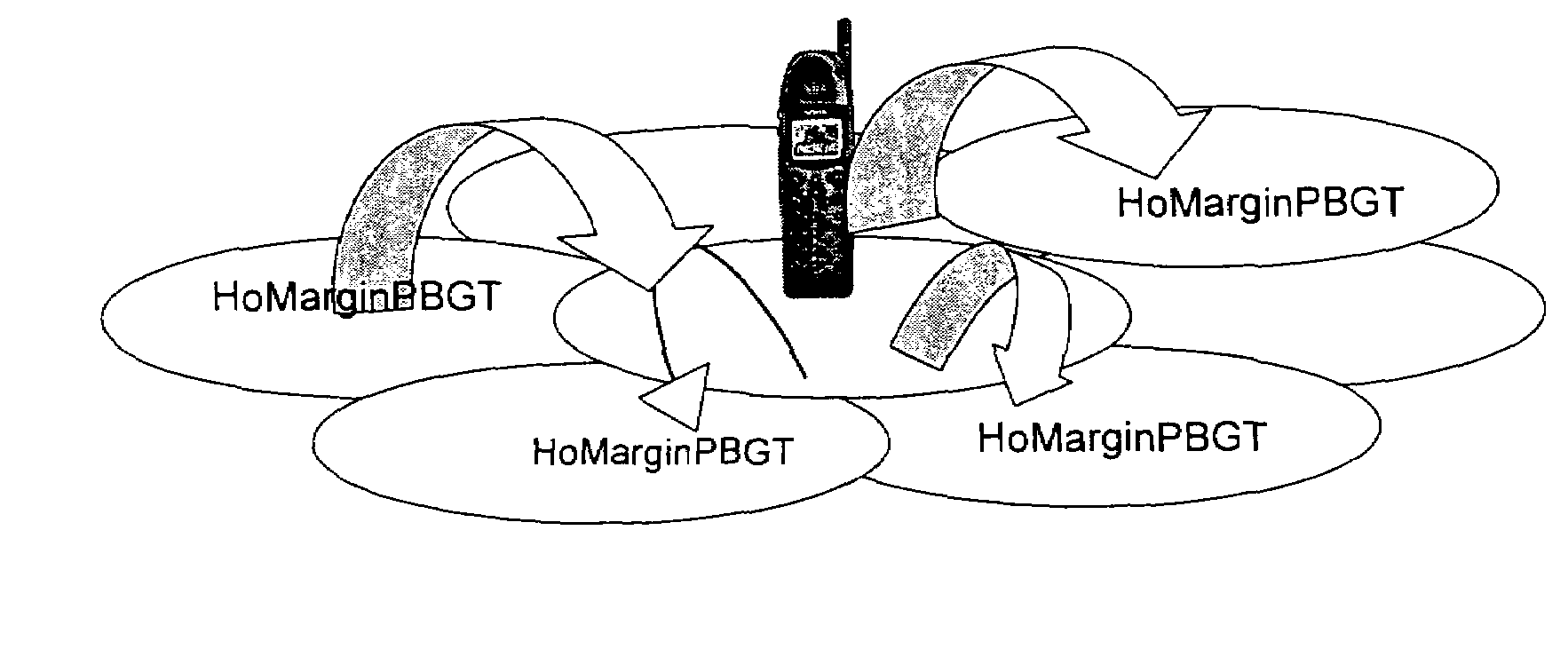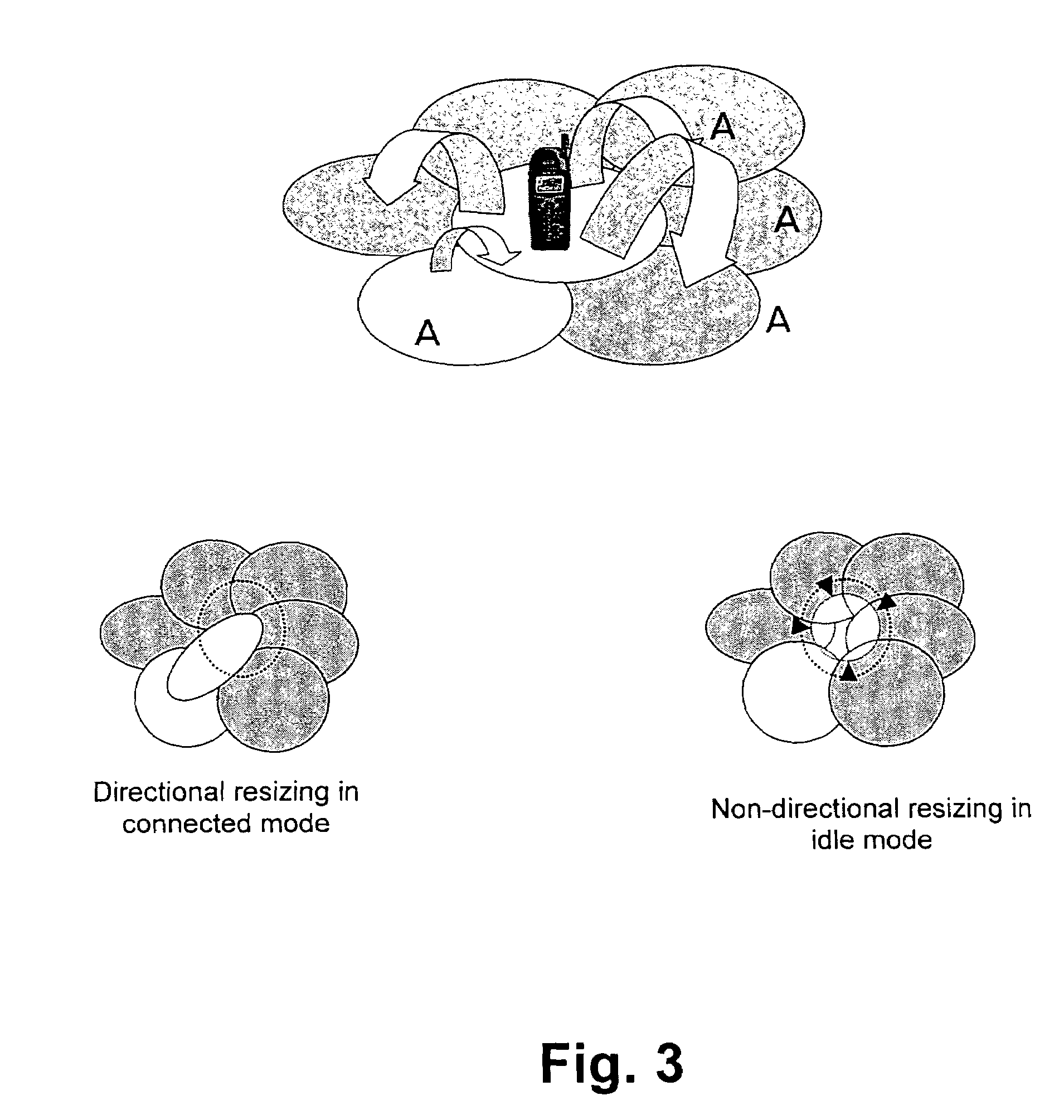Method and system for harmonizing an operation area for a mobile device in a cellular radio network
- Summary
- Abstract
- Description
- Claims
- Application Information
AI Technical Summary
Benefits of technology
Problems solved by technology
Method used
Image
Examples
Embodiment Construction
[0039]FIG. 1 shows an unnecessary flow of users, which may be prevented. A camped cell may differ from the final target cell, due to the fact that idle mode and connected mode traffic management strategies (defined by their parameters) may be quite different.
[0040]So, a search for common metrics to prioritise cells, regardless the stage of the relationship between the user and the network, defines the key process.
[0041]In GSM systems, C1 and C2 comparisons are the basic metrics used for the prioritisation of cells in idle mode, where the cell with a higher value will finally be chosen. Basic C2 cell reselection is calculated by equation:
C2serv=(RxLevserv−RxLevAccesMinserv)+CellReselectOffsetserv (1)
where RxLevserv is the received downlink level from beacon frequency of the currently serving base station,
[0042]RxLevelAccessMinserv is the minimum downlink level threshold received by the mobile device to camp in a cell, and
[0043]CellReselectOffsetserv is the biasing term to artificial...
PUM
 Login to view more
Login to view more Abstract
Description
Claims
Application Information
 Login to view more
Login to view more - R&D Engineer
- R&D Manager
- IP Professional
- Industry Leading Data Capabilities
- Powerful AI technology
- Patent DNA Extraction
Browse by: Latest US Patents, China's latest patents, Technical Efficacy Thesaurus, Application Domain, Technology Topic.
© 2024 PatSnap. All rights reserved.Legal|Privacy policy|Modern Slavery Act Transparency Statement|Sitemap



